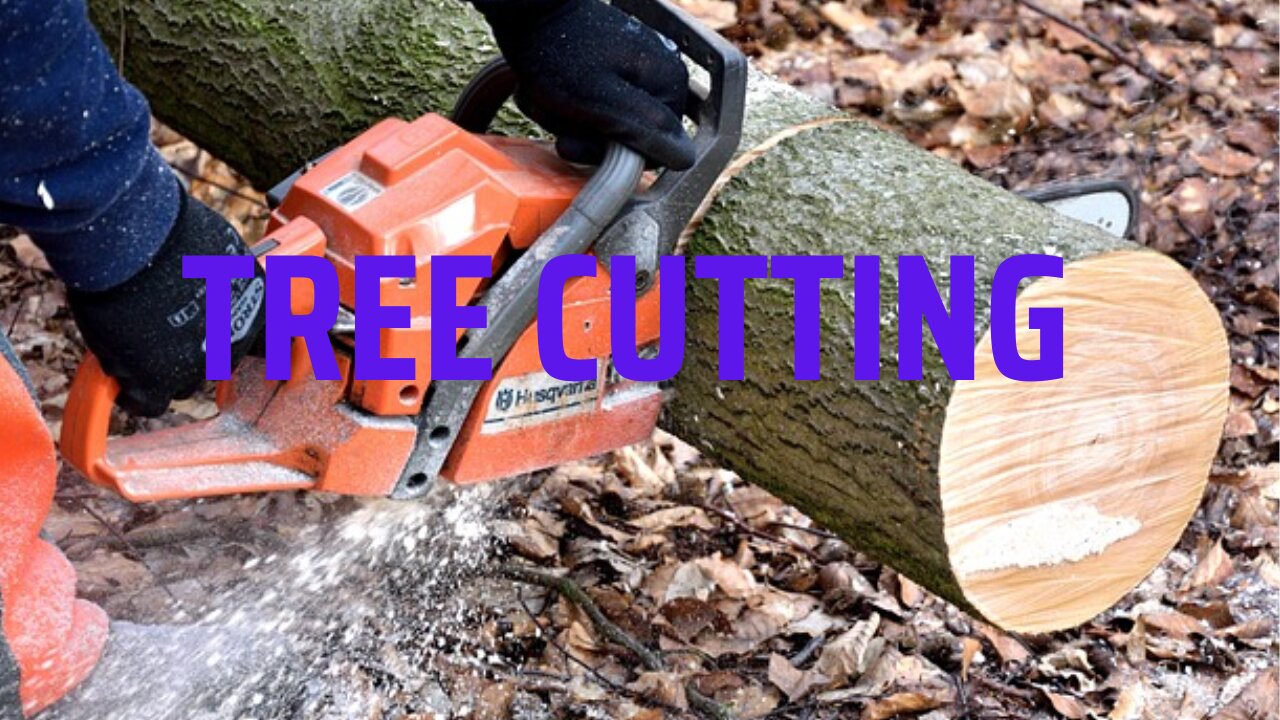Premium Only Content

TREE CUTTING
Tree cutting, also known as tree removal or tree felling, refers to the process of intentionally cutting down a tree. This can be done for various reasons, including:
Safety Concerns: Trees that are dead, diseased, or structurally unstable can pose a significant risk to people and property. In such cases, tree cutting might be necessary to prevent accidents.
Land Development: When land is being cleared for construction, urban development, or agriculture, trees may need to be cut down to make way for buildings, roads, or fields.
Disease or Pest Control: Trees that are severely affected by diseases or pests may need to be removed to prevent the spread of the issue to other trees.
Obstruction: Trees that obstruct power lines, views, or property lines may be cut down to address these issues.
Landscape Management: Sometimes, trees are removed to improve the overall health and aesthetics of a landscape. This can involve selectively removing certain trees to allow others to thrive.
Environmental Impact: Invasive tree species that threaten native ecosystems might be removed to protect the environment.
Tree cutting can be a hazardous task and should be carried out by professionals with the necessary equipment and expertise. Additionally, regulations and permits may be required in certain areas to ensure responsible tree cutting and to protect the environment.
It's worth noting that while tree cutting might sometimes be necessary, trees provide a range of ecological, aesthetic, and environmental benefits, including oxygen production, carbon dioxide absorption, wildlife habitat, and soil erosion prevention. As such, responsible tree management is important to balance the needs of humans and the environment.
-
 LIVE
LIVE
Welcome to the Rebellion Podcast
19 hours agoMonday Funday - WTTR Podcast Live 8/25
407 watching -
 LIVE
LIVE
Game On!
15 hours ago $0.02 earnedTom Brady And The Las Vegas Raiders ARE BACK! 2025 NFL Preview!
4,366 watching -
 LIVE
LIVE
The Bubba Army
2 days agoShould RaJa Jackson Be Arrested? - Bubba the Love Sponge® Show | 8/25/25
2,416 watching -
 LIVE
LIVE
FyrBorne
14 hours ago🔴Warzone M&K Sniping: Builds So Strong They Think I'm Hacking
321 watching -
 LIVE
LIVE
BEK TV
2 days agoTrent Loos in the Morning - 8/25/2025
1,026 watching -
 4:23
4:23
Blackstone Griddles
16 hours agoEasy Salmon Dinner on the Blackstone Griddle
36K1 -
 8:10
8:10
WhaddoYouMeme
1 day ago $0.08 earnedChristians, Before You See “Testament”, Watch this!
13.5K5 -
 8:42
8:42
Freedom Frontline
15 hours agoDurbin’s Trump Smear Video Just HUMILIATED Him in the Senate
20K6 -
 10:56
10:56
ariellescarcella
13 hours agoThe Shocking Divide Among College Voters Sparks Worry For America
14.6K7 -
 13:09
13:09
Forrest Galante
11 hours agoWildlife Expert Reacts To Deadly Australian Animal TikToks
64.7K10